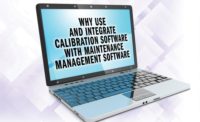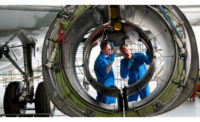A Calibration Software Solution
Integrating calibration software with asset management software for a comprehensive calibration solution and work order automation.

In this era of digitalization, integrating calibration software to asset management software will soon be the industry standard.
Not long ago, IT integration projects were an intimidating task due to the historic number of failed projects. This is not the case today because the technology exists and when combined with proper implementation they are very successful.
In this era of digitalization, integrating calibration software to asset management software will soon be the industry standard. Asset management software will continue to manage a plant’s work orders, while calibration software will enables users to quickly and easily access, manage, store and analyze detailed data required by regulatory agencies and auditors as well as provide information and analytics to make critical instrumentation management decisions, such as calibration intervals.
This article explains how to approach a calibration software and asset management integration project and the benefits of doing so.
Getting started
It is important to bear in mind that this type of software integration project is collaborative and requires a team of subject matter experts. It is not enough to let the instrumentation department or IT alone decide how it should be structured. The project should be approached as a collective effort to ensure both business and process objectives are met. Because departments have different purposes and tend to develop their own technical, cultural and language styles, communication is key for success.
As important as it is for the entire project team to understand everyone’s roles and responsibilities to ensure efforts are not duplicated or missed altogether, it is also essential to define the roles of the vendors and establish clear operation guidelines. Define goals along with descriptions for key duties and functions such as:
- Business: Typical objectives include transparency, compliance quality and time savings without sacrificing quality.
- Vendors: Choose vendors that invest into R&D with successful implementation experience and expertise.
- Data Transfer: Decide on what data needs to be transferred back and forth between systems, when and how.
Be sure to set rules and responsibilities for both the asset management and calibration software to ensure it meets the objectives of the process. For example:
- Calibration software should be the calibration system of record that stores the detailed calibration information.
- Asset management software should track all plant assets and be the master of scheduling.
- The asset management software should only track if an instrument passed or failed during the calibration event.
- Define your instrument types in the asset management software. For example, regular instrument assets that are never calibrated, such as an orifice plate. Secondly, there are calibrate-able assets, for example a transmitter.
- For an asset to be transferred into the calibration software, the asset should be defined as a calibrate-able asset.
If work order is generated by the asset management software for a calibrate-able asset, it should automatically flow into the calibration software. This is critical because the rules create a built-in method of security that does not allow bad data to be transferred back and forth. This ensures good data integrity for both software platforms. If a work order is not for a calibrate-able asset, it does not go to the calibration software.
Work orders are generated by a planner and sent to the calibration software. Calibration is performed by technicians and they store their data in the calibration software. This process allows field personnel to work only within the calibration software. They do not have to deal with work orders in the asset management software, saving time, money and frustration.
In the above scenario, work orders are planned, put into progress, the information is automatically transferred to calibration software. The field technician would be alerted by the planner via email. The technician can then download the asset test information to a documenting calibrator and perform the necessary work. The entire calibration process is automated because the results are stored in the calibrator’s memory. When the technician returns to the shop, they upload results into calibration software. When a calibration test passes, an automatic notification is sent back to the asset management software, which closes the work order and documents who performed the work and when it was done. A failure would require the initiation of a follow up work order. It is important to note that the work order history for calibration is 100% automated and technicians never work in the asset management system.
In the simplest terms, calibration software and asset management integration automate calibration, increasing efficiency while ensuring data integrity and create benefits such as:
- Average time savings of 50% due to an automated flow of data and minimized system oversight
- Easier compliance to regulations
- and audits
- Sustainable, long-term calibration program
- Better decision making because of data analysis capabilities Q
Looking for a reprint of this article?
From high-res PDFs to custom plaques, order your copy today!





